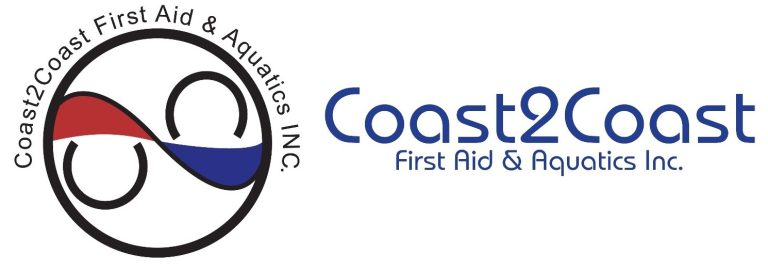Emergencies can happen any moment, including unexpected childbirth. You may find yourself in a scenario of helping a pregnant woman who is about to, or currently in labour. What do you do if you witness emergency childbirth in public?
Childbirth is a natural progression, and the body knows what to do; your primary role will be to bring comfort and reassurance to the woman, and to facilitate the process while you wait for Emergency Medical Responders (EMR) and healthcare personnel to arrive.
Labour and delivery of the baby will happen without extraneous involvement on your part, so your main role is to make sure the woman is as comfortable as possible, and can help her with such needs as getting water, a blanket, a cushion, etc. Emergency childbirth in public may sound intimidating or nerve-wracking, but after completing a training course with Coast2Coast, you will feel confident in your abilities to help the mother.
What to Look For
Signs and symptoms that signal forthcoming childbirth include the following:
• Contractions are two minutes apart or less
• The woman says ‘the baby is coming’
• The woman feels the urge to push
• The woman feels like she needs to have a bowel movement (this is a normal sensation for most women giving birth)
• The baby is crowning (the head is peaking)
What Can You Do
Have someone call 911 if childbirth is inevitable.
To care properly for the woman and assure a healthy and clean birth during emergency childbirth in public, you can:
- Ask if the woman would like help, and if she consents to you or anyone else helping her, including holding her or any form of physical contact in the process, do what you can to assist.
- Clear the area of unnecessary bystanders (ask if anyone specializes in healthcare or emergency services, and if anyone has First Aid training).
- Help the woman into a position of comfort (different for all women).
- Create a hygienic birthing area by placing clean blankets and/or towels under the woman. She may be embarrassed or shy, so place a clean sheet or towel over the woman’s abdomen for privacy purposes.
- As the baby is about to be born:
- Support the head as it is delivered. Do not push or pull the baby.
- Once the shoulders emerge, the rest of the baby will be delivered very quickly. Be prepared to quickly hold the baby.
- Newborns are slippery, so hold the baby firmly, but do not squeeze them, as every part of their body is fragile and limber.
- Position the baby face down and remove any fluids or mucus away from their eyes, mouth and nose.
- Check the baby’s airway and breathing. Newborns may not breathe and cry immediately after they are born, as fluids are still in their esophagus and lungs. In most situations, actively drying them with a towel will prompt them to breathe and begin crying, which will open up the esophagus to begin breathing. If the baby does not begin to breathe or cry, begin CPR immediately.
- Keep the baby warm by placing them directly onto the mother’s chest and covering with a blanket or towel, or by wrapping the baby in a clean towel or blanket.
- Let the placenta and umbilical cord drop onto a clean towel, and keep this near the baby. Do not cut the cord. Try to touch the placenta and cord as little as possible.
- Record the time of birth for the mother and medical personnel.
- If the mother is bleeding, you may need to apply gentle pressure to any bleeding tears. Let her know and ask for consent before applying pressure.
- Provide continual care for both the mother and the baby until EMS personnel arrive.
Inquire about CPR Training
Do you have questions regarding CPR training? Contact us today! Our customer service representatives are ready to assist you.
In majority of cases, emergency services will arrive before the woman gives birth. If any complications are to arise from the situation, only let a healthcare specialist and medical personnel handle the issue. In Canada, we do not have the statistical information regarding how many emergency births occur per year, but the United Kingdom have reported that 1 in 200 births are known as “emergency childbirth” not present at a hospital or medical centre.
The Ministry of Health in Ontario regarded over three thousand 911 calls in regard to unexpected labour and childbirth. We need to be ready for any situation of childbirth and labour emergencies through First Aid and CPR training. Our Emergency First Aid course at Coast2Coast prepares all participants of situations that can occur with an unexpected childbirth, such as correct positioning of the hands to carry out the child, and how to provide the utmost comfort to the woman in labour. If you come across an emergency childbirth in public, you will be prepared to help in any way possible, even if it is simply covering the woman for privacy.
Along with following these steps, and taking a course with us, it is also cautionary to not to do the provided below.
What NOT To Do
When providing care for a woman during emergency childbirth in public:
- Do not let the woman leave to use the restroom (the woman could deliver the baby into the toilet, putting the baby at risk for injury).
- Do not try to physically delay delivery, as this can cause serious injuries to both the mother and the baby. Childbirth is natural and will happen when the body is ready for ejection of the infant.
- Do not place your fingers in the woman’s vagina for any reason. This can introduce pathogens that can cause an infection. Do not touch anywhere the woman does not give consent, from arms and legs to groin and vagina.
- Do not pull on the baby or grab too hard.
_______________________________________________
If you are an expecting mother or father, it is suggested that you enroll in a prenatal course that prepares you for the act of childbirth, as well as an unexpected emergency childbirth in public as well. For everyone else, it is recommended to take Emergency or Standard First Aid and CPR/AED, to be fully educated and prepared in any case of an emergency childbirth in public or at home.
Call our office at 1-866-291-9121 to register or look at our broad locations across Ontario to find a course for you at Coast2Coast First Aid and Aquatics!
Register to Earn CPR Certification!
Find which CPR certification is best for you!
Register for our first aid courses, you are one click away.






















No comment yet, add your voice below!